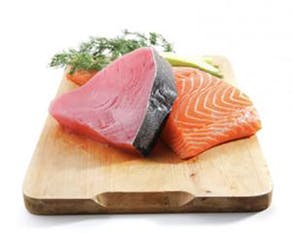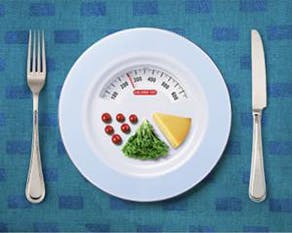Bicycle helmet do's and don'ts
HEALTH & WELLNESS
10.21.2014

It's a beautiful day for a bike ride. You fill your water bottle, lace up your shoes and head out. The thought of a head injury doesn't even cross your mind. Still, it's a risk you're taking if you don't wear a bicycle helmet.
Why wear a bicycle helmet?
It's simple. If you fall from your bike, the bicycle helmet takes the force of the blow — instead of your head. Although collisions with cars or other vehicles are likely to be the most serious, even a low-speed fall on a bicycle path can be dangerous. For kids and adults alike, wearing a bicycle helmet is the most effective way to prevent a life-threatening head injury.
Selecting a bicycle helmet
Bicycle helmets are cooler, more comfortable and easier to adjust than ever before. There are plenty of inexpensive choices for bikers of all ages. Just remember the ground rules:
Make sure the helmet is safe.
Look for a seal of approval from organizations such as the Consumer Product Safety Commission (CPSC), American National Standards Institute (ANSI) or Snell Memorial Foundation.
Make sure it fits snugly.
You shouldn't be able to move the bicycle helmet more than one inch in any direction, front to back or side to side. The sizing pads included with every bicycle helmet can help make the fit more secure. If you have long hair, consider a helmet with a ponytail port.
Think about visibility.
If the bicycle helmet straps block your vision — even a little bit — choose another helmet. Likewise, make sure motorists and other cyclists can see you. Choose a white or brightly colored helmet. Some helmets even come with lights.
Wearing a bicycle helmet
The rules for wearing a bicycle helmet are the same for kids and adults:
Wear the helmet flat on the top of your head.
Make sure the helmet covers the top of your forehead without tilting forward or backward, and the straps form a V shape under each ear.
Fasten the chin strap below your chin — not to the side or along your jaw.
If the bicycle helmet rocks from side to side or front to back, use the sizing pads that came with the helmet to get a better fit.
Avoid common bicycle helmet mistakes
If the bicycle helmet is tilted forward, the back of your head is more vulnerable to the force of a crash. To keep the helmet flat on your head, tighten the chin strap. If the helmet still tips forward, you may need a smaller helmet.
A bicycle helmet that tips backward is just as problematic. When this happens, the front and side of your head are vulnerable to the force of a crash. Again, tighten the chin strap. If the helmet still tips backward, you may need a smaller helmet.
Other factors to consider
Teach your children to remove their bicycle helmets when they're playing, especially before climbing on playground equipment or climbing trees. The helmet and chin strap may snag and pose a choking hazard.
If you're in a biking accident, throw out the bicycle helmet and replace it with a new one. Even if the helmet looks undamaged, it may not be able to withstand the force of another blow.
If you rent a bicycle and helmet for short-term use, examine the helmet closely for signs of damage, such as dents, cracks, scrapes or asymmetry. If a rental helmet looks excessively worn or fits improperly, ask for a different one.
Play it safe
Now that you know bicycle helmet basics, put them to good use. Wear your bicycle helmet every time you ride your bike — and make sure your children do, too. Don't let the thrill of the ride turn into a tragedy.
©1998-2013 Mayo Foundation for Medical Education and Research (MFMER). All rights reserved. Terms of Use
Image Credits: Maridav/Shutterstock.com
Recommended Articles
The 5 Best Foods That Will Help Supercharge Your Brain
Amidst our busy schedule, it's important to retain our focus and memory. Resting alone is not...
Iron deficiency is a lot more common than you would think. A recent survey by SATA CommHealth(i...
Mars vs Venus: Understanding the His and Hers of Nutritional Needs
Mars vs Venus: Understanding the His and Hers of Nutritional Gaps Although their DNAs are...






